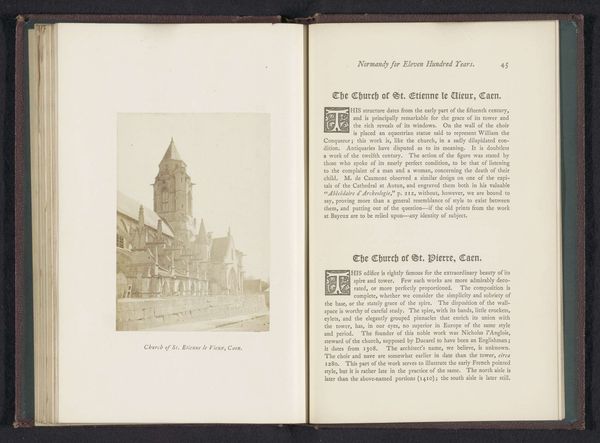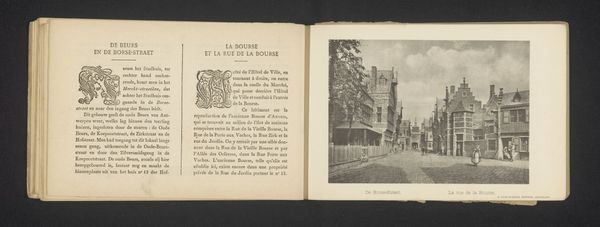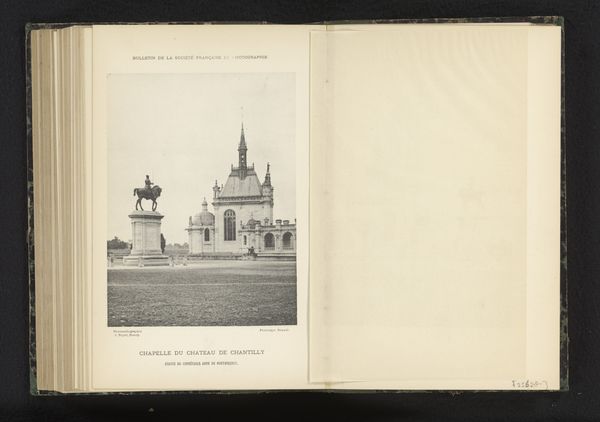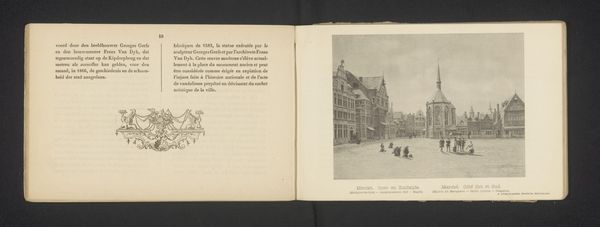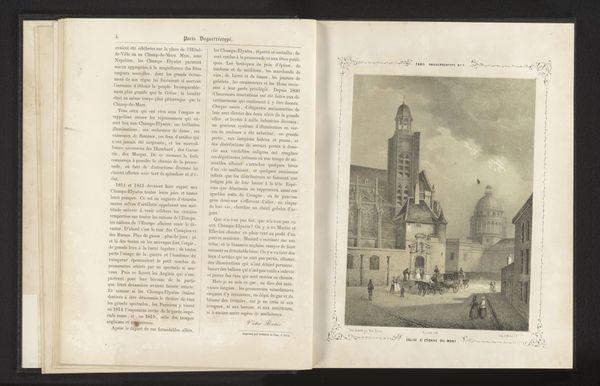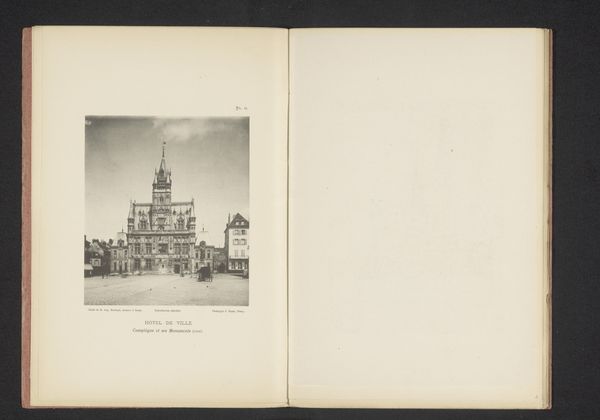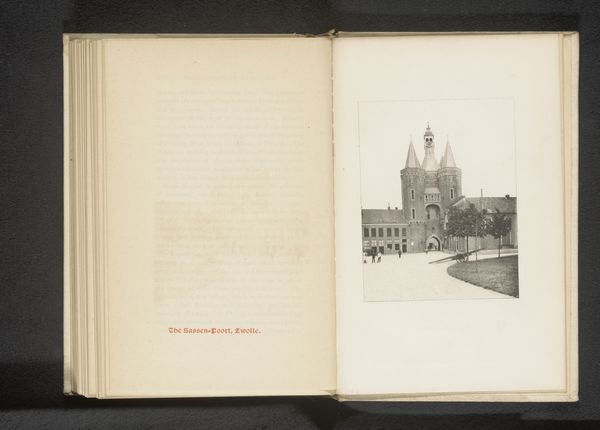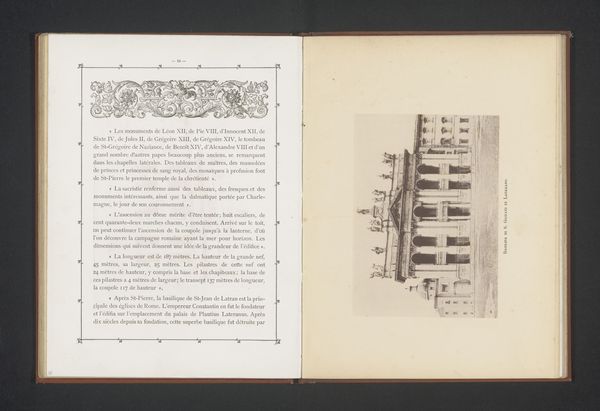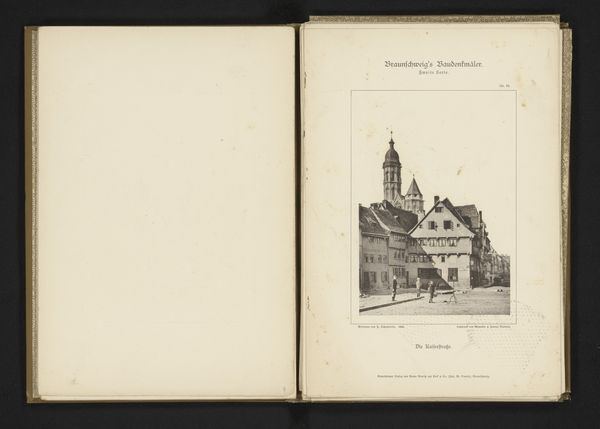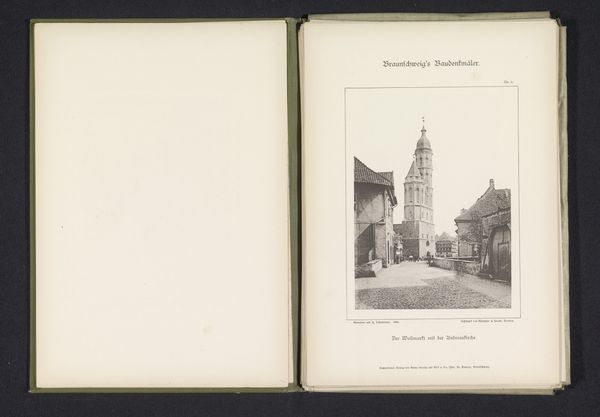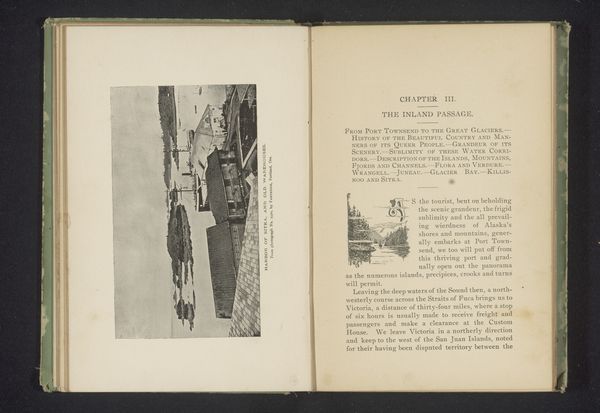
print, photography
# print
#
landscape
#
photography
#
cityscape
#
realism
Dimensions: height 127 mm, width 168 mm
Copyright: Rijks Museum: Open Domain
Curator: Here we have a print reproduction of a photograph predating 1894. It's titled "Gezicht op de Grote Markt in Antwerpen," or "View of the Grand Market in Antwerp." Editor: There's something very melancholic about the print’s monotone. The composition draws my eye into the vast emptiness of the square, making the architectural details seem quite imposing despite the photo's modest scale. Curator: The emptiness of the square actually highlights its socio-political function. It acts as a stage set for civic life and, potentially, public spectacle. This photograph freezes a moment of relative calm, but the square's inherent purpose is performative. Editor: True. But I also see a balance between light and shadow—the delicate cloud patterns contrast the heavier base, where our eyes encounter the detailed structures and blurry figures in the foreground. The geometric precision creates depth. What do you suppose the photographer sought to convey? Curator: Most likely it aimed to portray an idealised view of civic order, aligning with contemporary aspirations of urbanity. The muted tones suggest the grandeur of tradition, anchoring Antwerp's identity in an enduring visual record. Photography at this time wasn't just documentary. It also aimed to create certain impressions. Editor: An observation of human life told by a photographer. Look at the repetition of horizontal and vertical lines created by the architecture and pavement. But beyond mere visual accuracy, the choices give shape to a palpable stillness. Curator: Precisely. Each component builds upon the last to shape perception itself, directing gazes and influencing communal ideals. That is what these kinds of photographs communicated. Editor: This detailed observation makes me realize I might have initially dismissed the power imbued within the cityscape. My earlier analysis focused solely on composition when the narrative context opens avenues into the complex interplay between photographic art and communal ideologies of the period. Curator: That intersection of perception and intent offers invaluable context to these artworks and to ourselves, doesn't it?
Comments
No comments
Be the first to comment and join the conversation on the ultimate creative platform.
